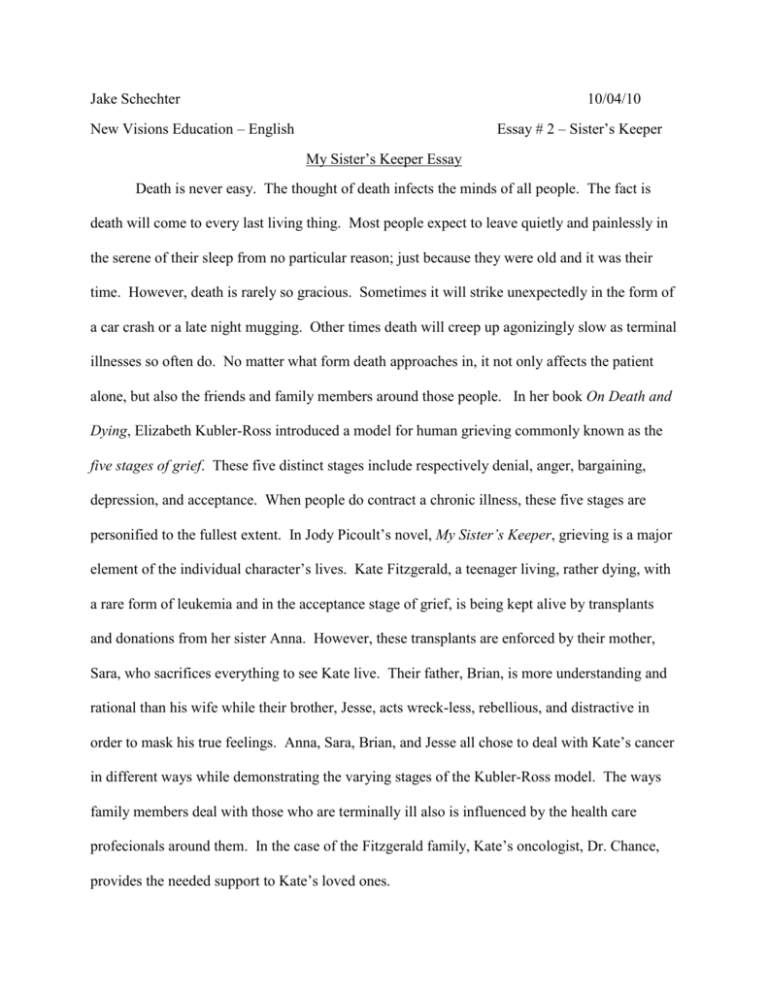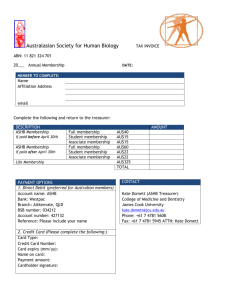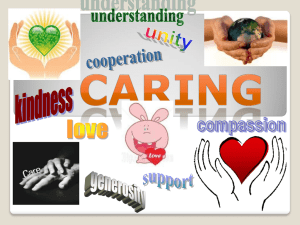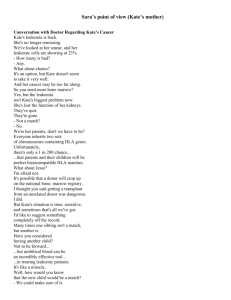sisters keeper essay
advertisement

Jake Schechter 10/04/10 New Visions Education – English Essay # 2 – Sister’s Keeper My Sister’s Keeper Essay Death is never easy. The thought of death infects the minds of all people. The fact is death will come to every last living thing. Most people expect to leave quietly and painlessly in the serene of their sleep from no particular reason; just because they were old and it was their time. However, death is rarely so gracious. Sometimes it will strike unexpectedly in the form of a car crash or a late night mugging. Other times death will creep up agonizingly slow as terminal illnesses so often do. No matter what form death approaches in, it not only affects the patient alone, but also the friends and family members around those people. In her book On Death and Dying, Elizabeth Kubler-Ross introduced a model for human grieving commonly known as the five stages of grief. These five distinct stages include respectively denial, anger, bargaining, depression, and acceptance. When people do contract a chronic illness, these five stages are personified to the fullest extent. In Jody Picoult’s novel, My Sister’s Keeper, grieving is a major element of the individual character’s lives. Kate Fitzgerald, a teenager living, rather dying, with a rare form of leukemia and in the acceptance stage of grief, is being kept alive by transplants and donations from her sister Anna. However, these transplants are enforced by their mother, Sara, who sacrifices everything to see Kate live. Their father, Brian, is more understanding and rational than his wife while their brother, Jesse, acts wreck-less, rebellious, and distractive in order to mask his true feelings. Anna, Sara, Brian, and Jesse all chose to deal with Kate’s cancer in different ways while demonstrating the varying stages of the Kubler-Ross model. The ways family members deal with those who are terminally ill also is influenced by the health care profecionals around them. In the case of the Fitzgerald family, Kate’s oncologist, Dr. Chance, provides the needed support to Kate’s loved ones. Anna is in the third stage or the bargaining stage of grief. She wants desperately to be free of the burden of both her life and Kate’s, but at the same time, Anna loves Kate and does not want her to die. In the chapter titled Thursday, Anna fantasizes about a life where Kate is dead: There were entire days where I did nothing but cry…But then, there were times when I let the veil lift a little, and other ideas would pop up. Like what it would be like to study oceanography at the University of Hawaii. Or skydiving. Or move to Prague. Or any of a million pipe dreams. I’d try to stuff myself into one of these scenarios, but it was like wearing a size five sneaker when your foot is a seven…I am convinced that there is a censor sitting on my brain…reminding me what I am not suppose to even think about , no matter how seductive… It’s probably a good thing… if I really try to figure out who I am without Kate in the equation, I’m not going to like who I see (178-179). Anna recognizes that whether or not Kate lives has a profound impact on what will occur in actuality. For a moment, Anna sees herself free of Kate, doing whatever she desires. She acknowledges how “seductive” this scenario but is then brought back to reality when she realizes that losing her best friend and sister would not be worth the freedom. Anna would like simultaneously for both and nether scenario to occur. In the end, it is Kate who decides Anna should become free of Kate as Kate embraces death. Sara is in denial, the first stage of grief, when it comes to the death of her daughter Kate. This mother of three selflessly devotes herself to Kate while selfishly ignores her two other children. Her devotion to Kate is also self destructive as she has quit her job as lawyer and dissolved the relationship with her husband, Brian. Sara even goes as far as to have a child, Anna, for the sole purpose of keeping Kate alive. Her denial is very clearly illustrated in the first chapter, Monday: This is a mistake. This is someone else’s unfortunate vial of blood that the doctor has analyzed. Look at my child, at the shine of her flyaway curls and the butterfly flight of her smile – this is not the face of someone dying by degrees (34). This is the most apparent and outright example of Sara’s denial. She refuses to believe that her daughter was the one infected with cancer; that her daughter’s beautiful curls and smile prevented her from contracting such a torturous disease. Sara’s form of grief is understandable but not okay at the same time. Denial is a basic stage that people go through when dealing with tragedy, as demonstrated by the Kubler-Ross model, but by ignoring others around her, Sara’s response became less acceptable. Throughout the book, Brian is constantly in the fourth or depression stage of the five stages. As he begins to realize the death of his daughter, Kate, is inevitable, Brian becomes more aware and understanding towards Anna and eventually flat out supports Anna’s decision to become medically independent, directly opposing his wife’s feelings. Oftentimes, Brian cannot emotionally handle the circumstances he is in and escapes into his work at the fire station. His decision to flee from the hardships of reality is a way of dealing with his depression. Brian’s depression is clearly seen in the Weekend chapter. After Dr. Chance, Kate’s oncologist, prescribes Arsenic as a method of prolonging Kate’s death, Sara and Brian argue whether or not Kate will live: He looks at me, his face carved by pain. ‘She is dying Sara. She will die, either tonight or tomorrow or maybe a year from now if we’re really lucky. You heard what Dr. Chance said. Arsenic’s not a cure. It just postpones what’s coming.’ My eyes fill with tears. ‘But I love her,’ I say, because that is reason enough (265). Brian, realizing Kate’s mortality, prepares for the death of his first daughter. She is going to die no matter what treatment is attempted and Brian is deeply saddened by this fact. Brian’s reaction is the most appropriate response to Kate’s illness. He knows that she has lived longer than anyone expected, he is not naive in thought and in action, and he is understanding of his Anna and Jesse. If I was placed in such a situation similar to the Fitzgerald family’s, I am confident that I would react as Brian has reacted. Finally, Jesse, the eldest child, is in the bargaining stage of grief. On the surface, Jesse is a tough character who performs juvenile and delinquent acts such as drugs, arson, and other illegal and/or harmful activities. However, this hardened exterior is only a tool to mask Jesse’s true feelings of inadequacy; that no matter what he does, he can never save his little sister. In the second Monday chapter, Jesse is seen bargaining for Kate’s life: I suddenly remember an old game I used to play when I was nine or ten…if I hold my breath to twenty seconds, the night won’t come. If I don’t blink. If I stand so still a fly lands on my cheek. Now, I find myself doing the same thing, bargaining to keep Kate, even though that isn’t the way it works (325). Here, Kate’s death is being compared directly to the coming of night. The night, as Jesse acknowledges, comes inevitably as will the death of Kate. Even though Jesse is aware of this, he still continues to play childish games in the effort of bargaining for Kate’s life mainly because this is all he can do. This fact deeply saddens him and he goes on to punch a hole in the hospital wall. The destructive behavior Jesse partakes in is unacceptable and the most inappropriate method out of all of his family members of dealing with Kate’s cancer. Dr. Chance is a key element to the way Kate’s family reacts to her illness just as many healthcare professionals do in real life. Chance is a realistic character, as doctors should be, who speaks in a stark and honest tone concerning Kate’s condition. But no matter how bleak Kate’s chances of survival are, Dr. Chance always offers hope. This upfront yet warm approach puts the facts down on the table while comforting the family of the dying. All four of Kate’s family members are forced to deal with her cancer. However, the ways each of the characters chose to cope with the grief are all very different. In reality, all people do in fact go through the different stages of Elizabeth Kubler-Ross’s model; what varies, as seen in My Sister’s Keeper, is the way people act during these stages.


![The mysterious Benedict society[1]](http://s2.studylib.net/store/data/005310565_1-e9948b5ddd1c202ee3a03036ea446d49-300x300.png)




